Oct
08
2021
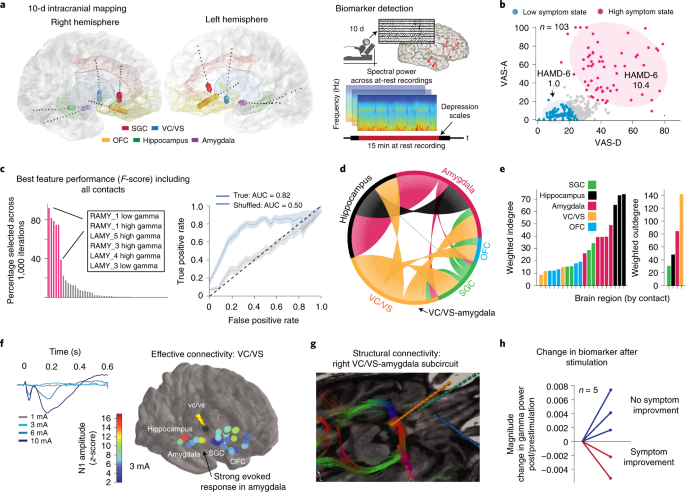 A new study published in Nature looks at a closed loop implanted deep brain stimulator to treat severe and treatment resistant depression, with very encouraging results. This is a report of a single patient, with is a useful proof of concept.
A new study published in Nature looks at a closed loop implanted deep brain stimulator to treat severe and treatment resistant depression, with very encouraging results. This is a report of a single patient, with is a useful proof of concept.
Severe depression can profoundly limit one’s life, and increase risk for suicide (affecting 300 million people worldwide and causing most of the 800,000 annual suicides). Depression, like many mental disorders, is very heterogenous, and is therefore not likely to be one specific disorder but a class of disorders with a variety of neurological causes. It also exists on a spectrum of severity, and it’s very likely that mild to moderate depression is phenomenologically different from severe depression. Severe depression can also be in some cases very treatment resistant, which simply means our current treatment options are probably not addressing the actual brain function that is causing the severe depression. We clearly need more options.
The pharmacological approach to severe depression has been very successful, but still not effective in all patients. For “major” depression, which is severe enough to impact a person’s daily life, pharmacological therapy and talk therapy (such as CBT – cognitive behaviorial therapy) seem to be equally effective. But again, these are statistical comparisons. Treatment needs to be individualized.
Continue Reading »
Oct
07
2021
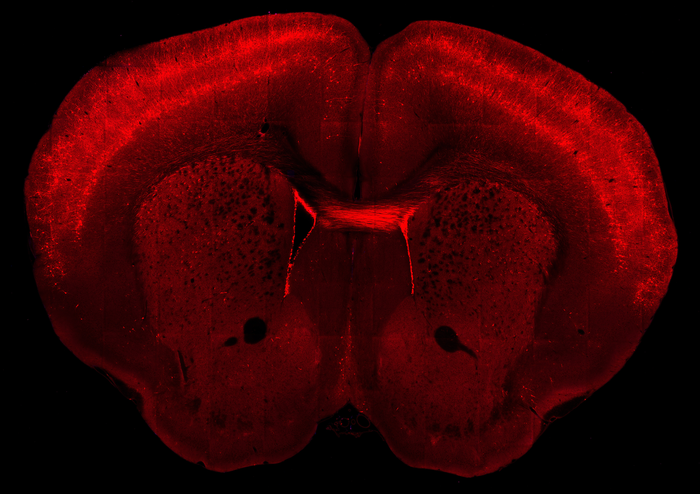 By now, especially if you are a regular reader here, you have probably heard of the connectome project, an attempt to entirely map the cells and connections of the human brain. This goal is actually comprised of multiple initiatives, one of which is the Brain Research Through Advancing Innovative Neurotechnologies (BRAIN) funded by the NIH. They have now published in Nature their first major result – a map of the mammalian primary motor cortex (technically a “multimodal cell census and atlas of the mammalian primary motor cortex”).
By now, especially if you are a regular reader here, you have probably heard of the connectome project, an attempt to entirely map the cells and connections of the human brain. This goal is actually comprised of multiple initiatives, one of which is the Brain Research Through Advancing Innovative Neurotechnologies (BRAIN) funded by the NIH. They have now published in Nature their first major result – a map of the mammalian primary motor cortex (technically a “multimodal cell census and atlas of the mammalian primary motor cortex”).
The goal of this initiative is to break the brain down into its constituent parts and then see how they all fit together. This begins with knowing all the different brain cell types, and this is part of the string of publications they have produced. The brain contains about 160 billion cells, with 87 billion neurons and the rest astrocytes (which provide supporting and modulating functions). There are many different kinds of neurons, with significant functional differences. Neurons differ in their structure and their chemistry.
The basic structure of a neuron is a cell body with dendrites (hair-like projections) for incoming signals and axons (longer projections) for outgoing signals. But the shape, number, and arrangement of dendrites and axons can vary considerably, and reflect their function, which relates to the pattern of connections the neuron makes. Neurons also differ in terms of their biochemistry – which neurotransmitters do they make, and which neurontransmitter receptors they have. Some neurotransmitters like glutamate are activating (make neurons fire faster) and others like GABA are inhibitory (make them fire slower or not at all).
Continue Reading »
Sep
28
2021
 The current estimate is that the average human brain contains 86 billion neurons. These neurons connect to each other in a complex network, involving 100 trillion connections. The job of neuroscientists is to map all these connections and to see how they work – no small task. There are multiple ways to approach this task.
The current estimate is that the average human brain contains 86 billion neurons. These neurons connect to each other in a complex network, involving 100 trillion connections. The job of neuroscientists is to map all these connections and to see how they work – no small task. There are multiple ways to approach this task.
At first neuroscientists just looked at the brain and described its macroscopic (or “gross”) anatomical structures. We can see there are different lobes of the brain and major connecting cables. You can also slice up the brain and see its internal structure. When the microscope was developed we could then look at the microscopic structure of the brain, and by using different staining techniques we could visualize the branching structure of axons and dendrites (the parts of neurons that connect to other neurons), we could see that there were different kinds of neurons, various layers in the cortex, and lots of pathways and nodes.
But even when we had a detailed map of the neuroanatomy of the brain down to the microscopic level, we still needed to know how it all functioned. We needed to see neurons in action. (And further, there are lots of non-neuronal cells in the brain such as astrocytes that also affect brain function.) At first we were able to infer what different parts of the brain did by examining people who had damage to one part of the brain. Damage to the left temporal lobe in most people causes language deficits, so this part of the brain must be involved in language processing. We could also do research on animals for all but the highest brain functions.
Continue Reading »
Sep
23
2021
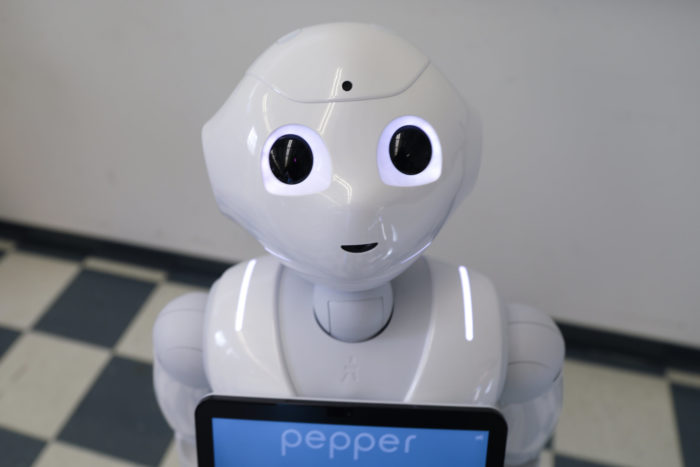 The robots are coming. Of course, they are already here, mostly in the manufacturing sector. Robots designed to function in the much softer and chaotic environment of a home, however, are still in their infancy (mainly toys and vacuum cleaners). Slowly but surely, however, robots are spreading out of the factory and into places where they interact with humans. As part of this process, researchers are studying how people socially react to robots, and how robot behavior can be tweaked to optimize this interaction.
The robots are coming. Of course, they are already here, mostly in the manufacturing sector. Robots designed to function in the much softer and chaotic environment of a home, however, are still in their infancy (mainly toys and vacuum cleaners). Slowly but surely, however, robots are spreading out of the factory and into places where they interact with humans. As part of this process, researchers are studying how people socially react to robots, and how robot behavior can be tweaked to optimize this interaction.
We know from prior research that people react to non-living things as if they are real people (technically, as if they have agency) if they act as if they have a mind of their own. Our brains sort the world into agents and objects, and this categorization seems to entirely depend on how something moves. Further, emotion can be conveyed with minimalistic cues. This is why cartoons work, or ventriloquist dummies.
A humanoid robot that can speak and has basic facial expressions, therefore, is way more than enough to trigger in our brains the sense that it is a person. The fact that it may be plastic, metal, and glass does not seem to matter. But still, intellectually, we know it is a robot. Let’s further assume for now we are talking about robots with narrow AI only, no general AI or self-awareness. Cognitively the robot is a computer and nothing more. We can now ask a long list of questions about how people will interact with such robots, and how to optimize their behavior for their function.
Continue Reading »
Sep
21
2021
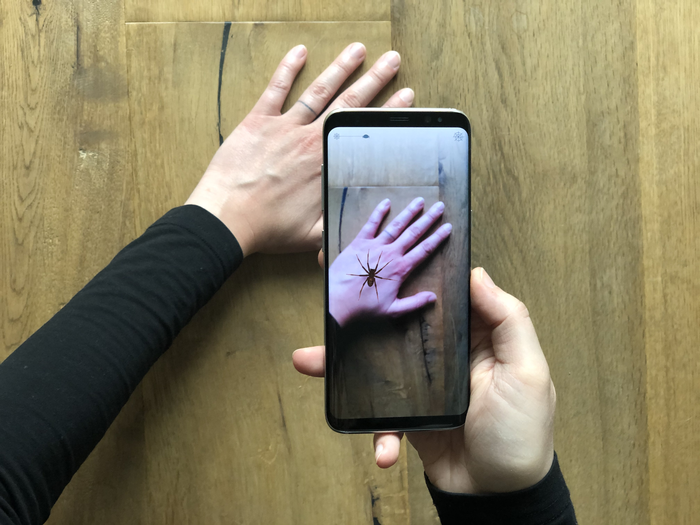 Are you afraid of spiders? I mean, really afraid, to the point that you will alter your plans and your behavior in order to specifically reduce the chance of encountering one of these multi-legged creatures? Intense fears, or phobias, are fairly common, affecting from 3-15% of the population. The technical definition (from the DSM-V) of phobia contains a number of criteria, but basically it is a persistent fear or anxiety provoked by a specific object or situation that is persistent, unreasonable and debilitating. In order to be considered a disorder:
Are you afraid of spiders? I mean, really afraid, to the point that you will alter your plans and your behavior in order to specifically reduce the chance of encountering one of these multi-legged creatures? Intense fears, or phobias, are fairly common, affecting from 3-15% of the population. The technical definition (from the DSM-V) of phobia contains a number of criteria, but basically it is a persistent fear or anxiety provoked by a specific object or situation that is persistent, unreasonable and debilitating. In order to be considered a disorder:
“The fear, anxiety, or avoidance causes clinically significant distress or impairment in social, occupational, or other important areas of functioning.”
The most effective treatment for phobias is exposure therapy, which gradually exposes the person suffering from a phobia to the thing or situation which provokes fear and anxiety. This allows them to slowly build up a tolerance to the exposure (desensitization), to learn that their fears are unwarranted and to reduce their anxiety. Exposure therapy works, and reviews of the research show that it is effective and superior to other treatments, such as cognitive therapy alone.
But there can be practical limitations to exposure therapy. One of which is the inability to find an initial exposure scenario that the person suffering from a phobia will accept. For example, you may be so phobic of spiders that any exposure is unacceptable, and so there is no way to begin the process of exposure therapy. For these reasons there has been a great deal of interest in using virtual/augment reality for exposure therapy for phobia. A 2019 systematic review including nine studies found that VR exposure therapy was as effective as “in vivo” exposure therapy for agoraphobia (fearing situations like crowds that trigger panic) and specific phobias, but not quite as effective for social phobia.
Continue Reading »
Sep
14
2021
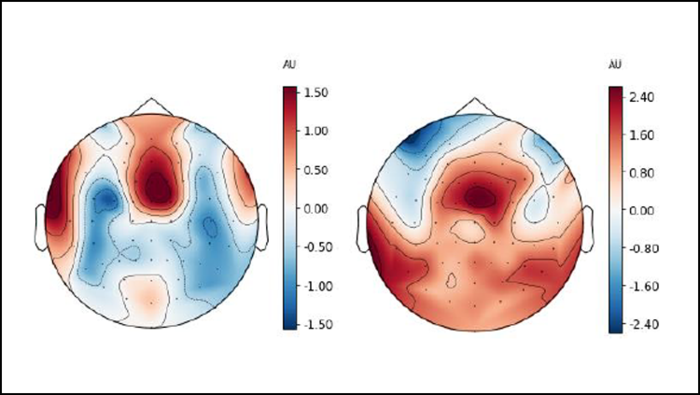 It is a fundamental truth of human behavior that people sometimes cheat. And yet, we tend to have strong moral judgements against cheating, which leads to anti-cheating social pressure. How does this all play out in the human brain?
It is a fundamental truth of human behavior that people sometimes cheat. And yet, we tend to have strong moral judgements against cheating, which leads to anti-cheating social pressure. How does this all play out in the human brain?
Psychologists have tried to understand this within the standard neuroscience paradigm – that people have basic motivations mostly designed to meet fundamental needs, but we also have higher executive function that can strategically override these motivations. So the desire to cheat in order to secure some gain is countered by moral self-control, leading to an internal conflict (cognitive dissonance). We can resolve the dissonance in a number of ways. We can rationalize the morality in order to internally justify the desire to cheat, or we can suppress the desire to cheat and get a reward by feeling good about ourselves. Except experimentally most people do not fall at either end of the spectrum, but rather they cheat sometimes.
Recent research, however, has challenged this narrative, that cheating for gain is the default behavior and not cheating requires cognitive control. A new study replicates prior research showing that people differ in terms of their default behavior. Some people are mostly honest and only cheat a little, while others mostly cheat, and there is a continuum between. Perhaps even more interesting is that the research suggests that for those who at baseline tend to cheat, markers of cognitive control (using an EEG to measure brain activity) increase when they don’t cheat and behave honestly. That’s actually not the surprising part, and fits the classic narrative that people tend to cheat unless they exert self-control to be honest. However, those who are more honest at baseline show the same markers of increased cognitive control when they do cheat. They have to override their inherent instinct in the same way that baseline cheaters do. What’s happening here?
Before I discuss how to interpret all this, let me explain the research paradigm. Subjects were tasked with finding differences between two similar images. If they could find three differences, they were given a real reward. However, some of the images only had two differences, so subjects had to either accept defeat or cheat in order to win. First subjects were tested at baseline to determine their inherent tendency to cheat. Then they were encouraged to cheat with the rigged games. EEGs were used to measure theta wave activity in specific parts of the brain, which correlates with the degree of cognitive control. Subjects who cheated more at baseline showed increased theta activity when they didn’t cheat, and those who were more honest at baseline showed increased theta activity when they cheated.
Therefore, it appears more accurate to say that cognitive control allows us not to do the morally “correct” thing, but to act against our instincts, whatever they are. But why would people have such different instincts in the first place?
Continue Reading »
Sep
02
2021
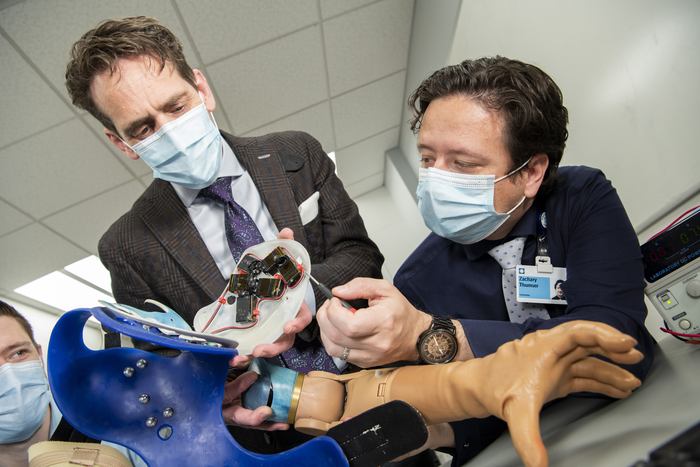 The term “bionics” was coined by Jack E. Steele in August 1958. It is a portmanteau of biologic and electronic. Martin Caidin used the word in his 1972 novel, Cyborg (which is another portmanteau of cybernetic organism). But the term really became popularized in the 1970s TV show, The Six Million Dollar Man. Of course, at the time bionic limbs seemed futuristic, perhaps something we would see in a few decades. Thirty years always feels like far enough in the future that any imagined technology should be ready by then. But here we are, almost 50 years later, and we are nowhere near the technology Steve Austin was sporting. Bionics, as depicted, was more like 100 or more years premature. This is tech more appropriate to Luke Skywalker’s hand in Star Wars, rather than some secret government project in the 1970s.
The term “bionics” was coined by Jack E. Steele in August 1958. It is a portmanteau of biologic and electronic. Martin Caidin used the word in his 1972 novel, Cyborg (which is another portmanteau of cybernetic organism). But the term really became popularized in the 1970s TV show, The Six Million Dollar Man. Of course, at the time bionic limbs seemed futuristic, perhaps something we would see in a few decades. Thirty years always feels like far enough in the future that any imagined technology should be ready by then. But here we are, almost 50 years later, and we are nowhere near the technology Steve Austin was sporting. Bionics, as depicted, was more like 100 or more years premature. This is tech more appropriate to Luke Skywalker’s hand in Star Wars, rather than some secret government project in the 1970s.
We are, however, making progress, which I have been writing about periodically here. Now a team at Cleveland Clinic has produced a robot arm tested in two subjects, and they are breaking out the term “bionic” to describe their technology. They achieve their level of functionality by combining three aspects of a brain-machine interface connecting to a robotic limb – intuitive motor control, touch sensation, and kinesthetic sensation (simulating proprioception with vibration). The kinesthetic sensation allows the user to feel the robotic limb’s movements. The authors write:
Here, we show that the neurorobotic fusion of touch, grip kinesthesia, and intuitive motor control promotes levels of behavioral performance that are stratified toward able-bodied function and away from standard-of-care prosthetic users.
Continue Reading »
Jul
30
2021
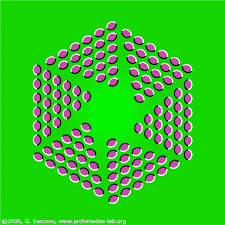
We mostly take our vision for granted. I am not referring to how much we appreciate having good vision, for those who do, but rather we tend to be unaware of how much of a neurological feat simple vision is. In a way, we evolved not to appreciate this – the experience of good vision evolved to be seamless, and to hide all the massive processing necessary to make it so. Neuroscientists, however, have been making a lot of progress reverse engineering how our brains process vision, uncovering new layers of complexity.
A recent study, for example, looked at the persistence of visual images in the brain given dynamic stimuli. How does the brain maintain a constant representation of an object in the world when the image of that object might be dramatically and rapidly changing? Again, we tend to think of our own vision like a video camera, passively recording what is out there. But actually vision is a complex hierarchical constructive process. Imagine, for example, driving in a car. There are other cars on the road, and there are objects on the side of the road you are passing by. The visual image falling on your retina is changing dynamically, and your brain has to keep up with all this change while maintaining a sense of stability.
How much processing power this takes becomes apparent to many people with traumatic brain injury (TBI). This can cause a disrupti0n in the connections among neurons of the brain, slowing down processing speed. People with TBI often experience disorientation when driving, moving quickly, or even turning around. Their brain cannot keep up with the rapidly changing visual input. This is a common symptom because visual processing is one of the most intense that happens in the brain, so it is the first to be affected (the ability to focus and shift attention being another).
Continue Reading »
Jul
27
2021
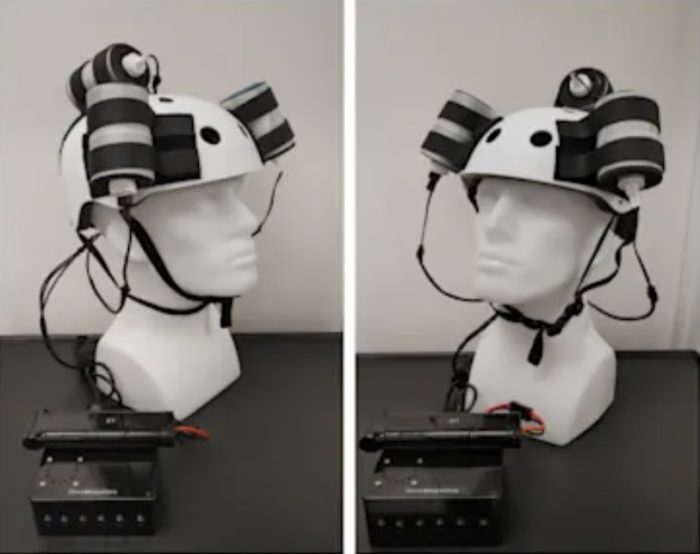 Magnets for healing have a bad rap, one they rightfully deserve. Magnetic snake-oil devices with all sorts of bogus medical claims are as old as magnets themselves. It may have something to do with the fact that magnets seem like magic, exerting and invisible force at a distance. So it’s often an easy sell. Also, magnets are real and do produce a real energy field (unlike the non-existent “life energy” fields common in alternative medicine). So it makes any claims for them seem all the more plausible.
Magnets for healing have a bad rap, one they rightfully deserve. Magnetic snake-oil devices with all sorts of bogus medical claims are as old as magnets themselves. It may have something to do with the fact that magnets seem like magic, exerting and invisible force at a distance. So it’s often an easy sell. Also, magnets are real and do produce a real energy field (unlike the non-existent “life energy” fields common in alternative medicine). So it makes any claims for them seem all the more plausible.
Because of this, magnets do have real medical applications. Perhaps most common is MRI scans – magnetic resonance imaging. But also there is a lot of research into TMS, transcranial magnetic stimulation, for a variety of neurological indications. Our bodies are electromagnetic devices, and we can alter cell function with electricity and magnetic fields. The trick is, applying them in such a way that they can be exploited for benefit rather than causing harm or having no real effect.
For the consumer with insufficient scientific or medical background, it can be very challenging to tell the difference between a legitimate magnetic medical device and a scam. One good rule of thumb – if the magnet is fairly weak (refrigerator magnet level) it is probably worthless. Real biologically active magnets tend to be powerful. Another slightly more technical fact is that biologically active magnets tend to have an alternating field, while magnetic quack devices tend to have a static magnetic field (which has little biological effect).
Continue Reading »
Jul
06
2021
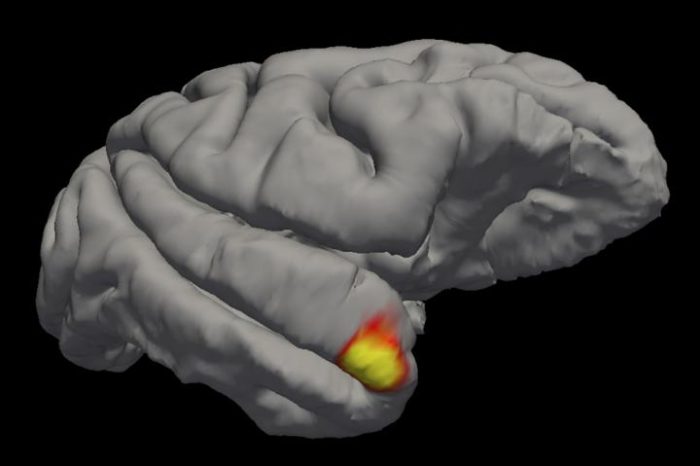 People are really good at recognizing faces. One of my lecture bits is to show a picture of a famous person for a fraction of a second (as fast as I can make the picture cycle in Powerpoint). The vast majority of the audience has no problem placing this face in their memory from just a quick glance. How does the brain accomplish this feat? That is something that neuroscientists are still working out. We already have a lot of information about the visual cortex and how it puts images together. We also know that the fusiform gyrus is essential for facial recognition. This brain structure lies at the junction of the occipital lobe, where the visual cortex is, and the medial temporal lobe which is involved with memory.
People are really good at recognizing faces. One of my lecture bits is to show a picture of a famous person for a fraction of a second (as fast as I can make the picture cycle in Powerpoint). The vast majority of the audience has no problem placing this face in their memory from just a quick glance. How does the brain accomplish this feat? That is something that neuroscientists are still working out. We already have a lot of information about the visual cortex and how it puts images together. We also know that the fusiform gyrus is essential for facial recognition. This brain structure lies at the junction of the occipital lobe, where the visual cortex is, and the medial temporal lobe which is involved with memory.
What is not well understood is exactly how the visual cortex connects to memory – how do we recognize familiar faces? One hypothesis is somewhat dismissively known as “the grandmother neuron”, based on the idea that one neuron would encode the face of your grandmother and connect that pattern with your memories of your grandmother. No such neuron has been discovered, and advances in neuroscience have led to the conclusion that it likely never will be. One neuron is insufficient to encode something as complex as a human face.
But perhaps there is a region or a circuit or network in the brain that serves this function. Neuroscientists may have zeroed in on the brain region that functions like the grandmother neuron. They studied macaque monkeys, exposing them to pictures of faces they have seen in person and other they have not seen before except digitally. When pictures of faces they have seen before were displayed the temporal pole (front tip of the temporal lobes) lit up on fMRI scanning. This cluster of cells also responded “non linearly” when increasing amounts of a familiar faces were shown, implying that the whole pattern is greater than the sum of its parts. Further, when distinctive parts of a face were show they lit up as if the entire face were show. This could indicate that once sufficient detail were shown to trigger the memory of the entire face, full activity of that region was then engaged.
Continue Reading »
 A new study published in Nature looks at a closed loop implanted deep brain stimulator to treat severe and treatment resistant depression, with very encouraging results. This is a report of a single patient, with is a useful proof of concept.
A new study published in Nature looks at a closed loop implanted deep brain stimulator to treat severe and treatment resistant depression, with very encouraging results. This is a report of a single patient, with is a useful proof of concept.
 By now, especially if you are a regular reader here, you have probably heard of the connectome project, an attempt to entirely map the cells and connections of the human brain. This goal is actually comprised of multiple initiatives, one of which is the Brain Research Through Advancing Innovative Neurotechnologies (BRAIN) funded by the NIH. They have now
By now, especially if you are a regular reader here, you have probably heard of the connectome project, an attempt to entirely map the cells and connections of the human brain. This goal is actually comprised of multiple initiatives, one of which is the Brain Research Through Advancing Innovative Neurotechnologies (BRAIN) funded by the NIH. They have now  The current estimate is that the average human brain contains
The current estimate is that the average human brain contains  The robots are coming. Of course, they are already here, mostly in the manufacturing sector. Robots designed to function in the much softer and chaotic environment of a home, however, are still in their infancy (mainly toys and vacuum cleaners). Slowly but surely, however, robots are spreading out of the factory and into places where they interact with humans. As part of this process, researchers are studying how people socially react to robots, and how robot behavior can be tweaked to optimize this interaction.
The robots are coming. Of course, they are already here, mostly in the manufacturing sector. Robots designed to function in the much softer and chaotic environment of a home, however, are still in their infancy (mainly toys and vacuum cleaners). Slowly but surely, however, robots are spreading out of the factory and into places where they interact with humans. As part of this process, researchers are studying how people socially react to robots, and how robot behavior can be tweaked to optimize this interaction. Are you afraid of spiders? I mean, really afraid, to the point that you will alter your plans and your behavior in order to specifically reduce the chance of encountering one of these multi-legged creatures? Intense fears, or phobias, are fairly common, affecting from 3-15% of the population. The technical definition (
Are you afraid of spiders? I mean, really afraid, to the point that you will alter your plans and your behavior in order to specifically reduce the chance of encountering one of these multi-legged creatures? Intense fears, or phobias, are fairly common, affecting from 3-15% of the population. The technical definition ( It is a fundamental truth of human behavior that people sometimes cheat. And yet, we tend to have strong moral judgements against cheating, which leads to anti-cheating social pressure. How does this all play out in the human brain?
It is a fundamental truth of human behavior that people sometimes cheat. And yet, we tend to have strong moral judgements against cheating, which leads to anti-cheating social pressure. How does this all play out in the human brain? The term “bionics” was coined by Jack E. Steele in August 1958. It is a portmanteau of biologic and electronic. Martin Caidin used the word in his 1972 novel, Cyborg (which is another portmanteau of cybernetic organism). But the term really became popularized in the 1970s TV show, The Six Million Dollar Man. Of course, at the time bionic limbs seemed futuristic, perhaps something we would see in a few decades. Thirty years always feels like far enough in the future that any imagined technology should be ready by then. But here we are, almost 50 years later, and we are nowhere near the technology Steve Austin was sporting. Bionics, as depicted, was more like 100 or more years premature. This is tech more appropriate to Luke Skywalker’s hand in Star Wars, rather than some secret government project in the 1970s.
The term “bionics” was coined by Jack E. Steele in August 1958. It is a portmanteau of biologic and electronic. Martin Caidin used the word in his 1972 novel, Cyborg (which is another portmanteau of cybernetic organism). But the term really became popularized in the 1970s TV show, The Six Million Dollar Man. Of course, at the time bionic limbs seemed futuristic, perhaps something we would see in a few decades. Thirty years always feels like far enough in the future that any imagined technology should be ready by then. But here we are, almost 50 years later, and we are nowhere near the technology Steve Austin was sporting. Bionics, as depicted, was more like 100 or more years premature. This is tech more appropriate to Luke Skywalker’s hand in Star Wars, rather than some secret government project in the 1970s.
 Magnets for healing have a bad rap,
Magnets for healing have a bad rap,  People are really good at recognizing faces. One of my lecture bits is to show a picture of a famous person for a fraction of a second (as fast as I can make the picture cycle in Powerpoint). The vast majority of the audience has no problem placing this face in their memory from just a quick glance. How does the brain accomplish this feat? That is something that neuroscientists are still working out. We already have a lot of information about the visual cortex and how it puts images together. We also know that
People are really good at recognizing faces. One of my lecture bits is to show a picture of a famous person for a fraction of a second (as fast as I can make the picture cycle in Powerpoint). The vast majority of the audience has no problem placing this face in their memory from just a quick glance. How does the brain accomplish this feat? That is something that neuroscientists are still working out. We already have a lot of information about the visual cortex and how it puts images together. We also know that 




